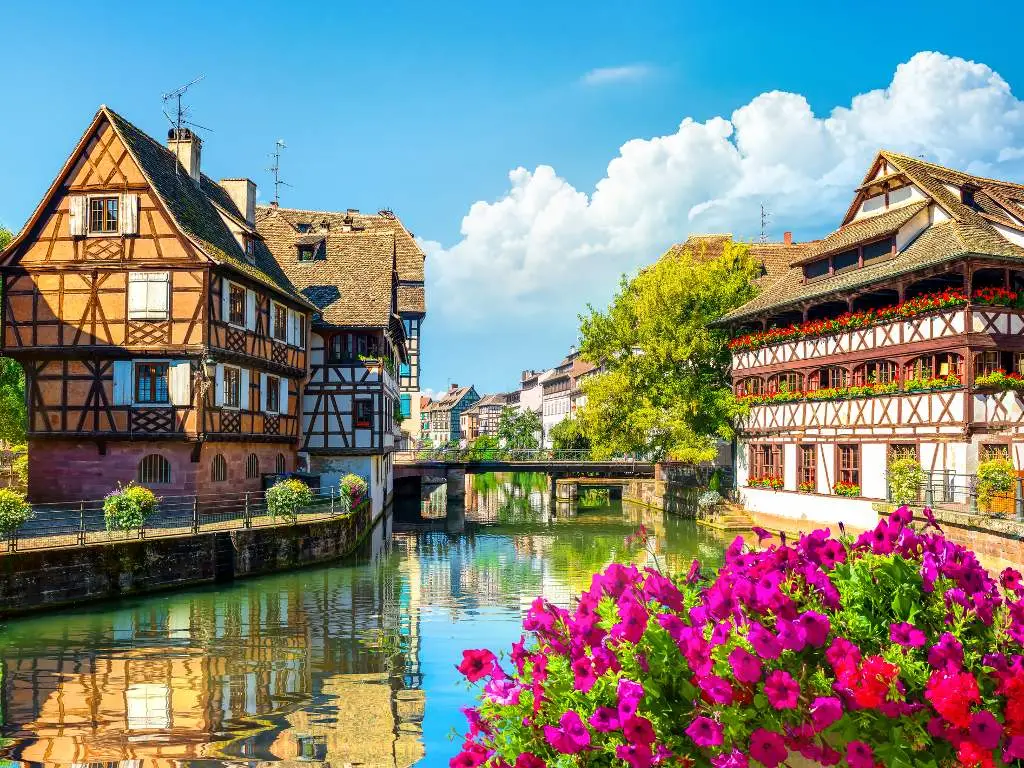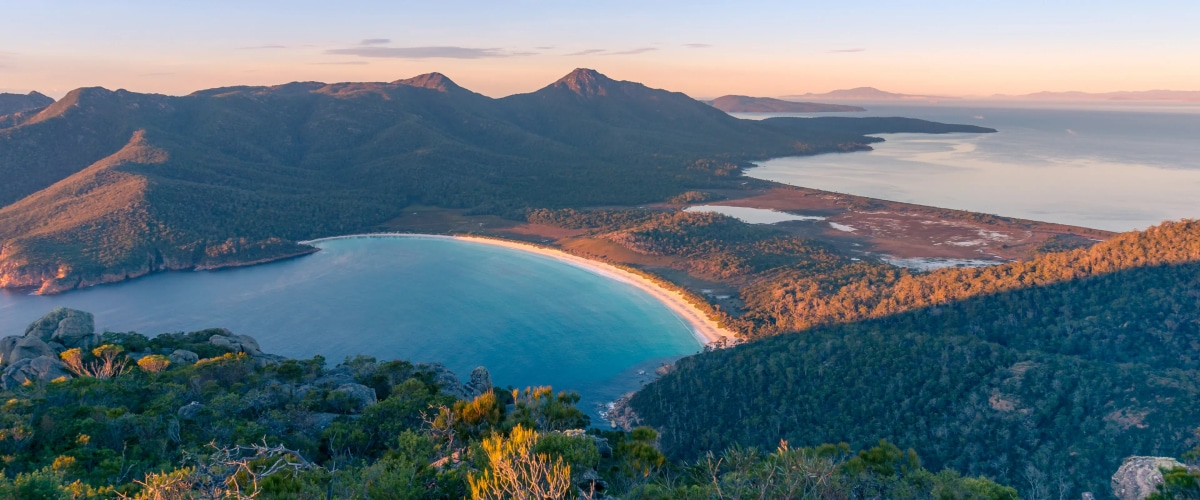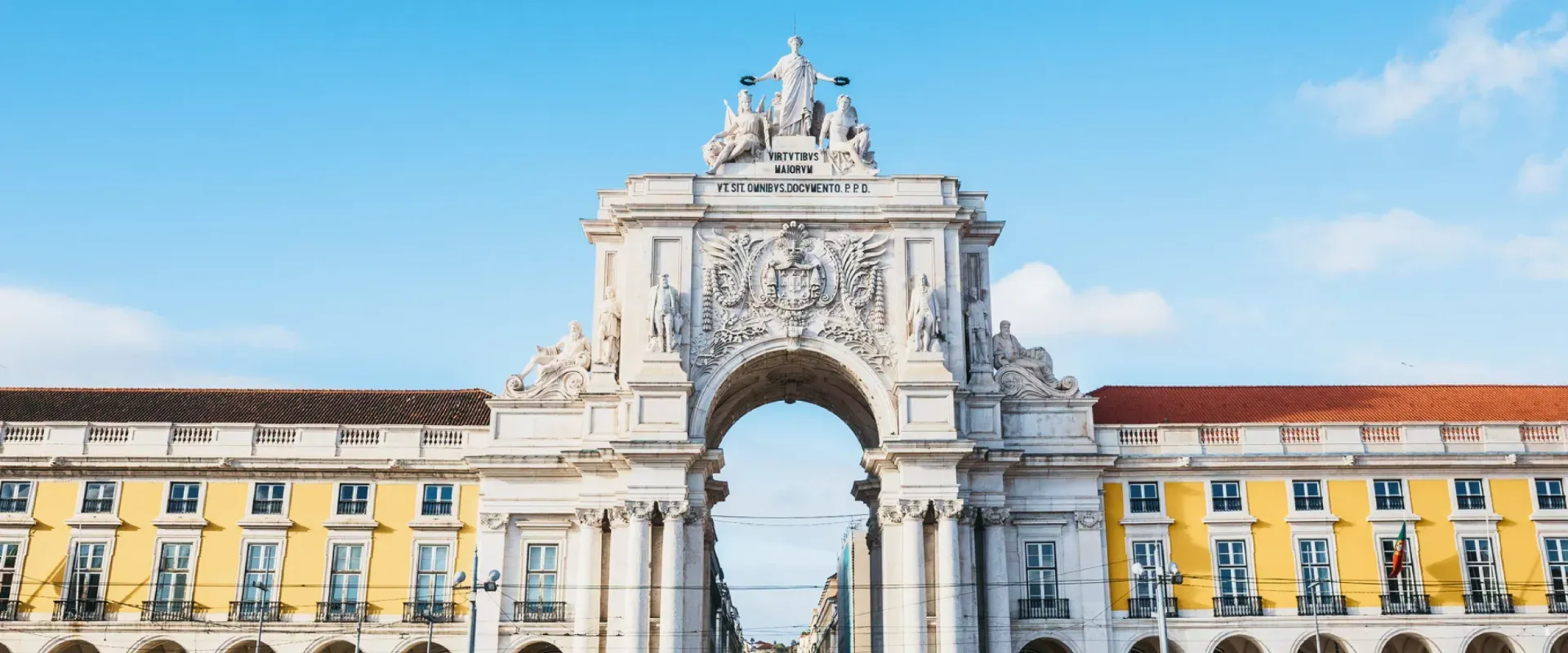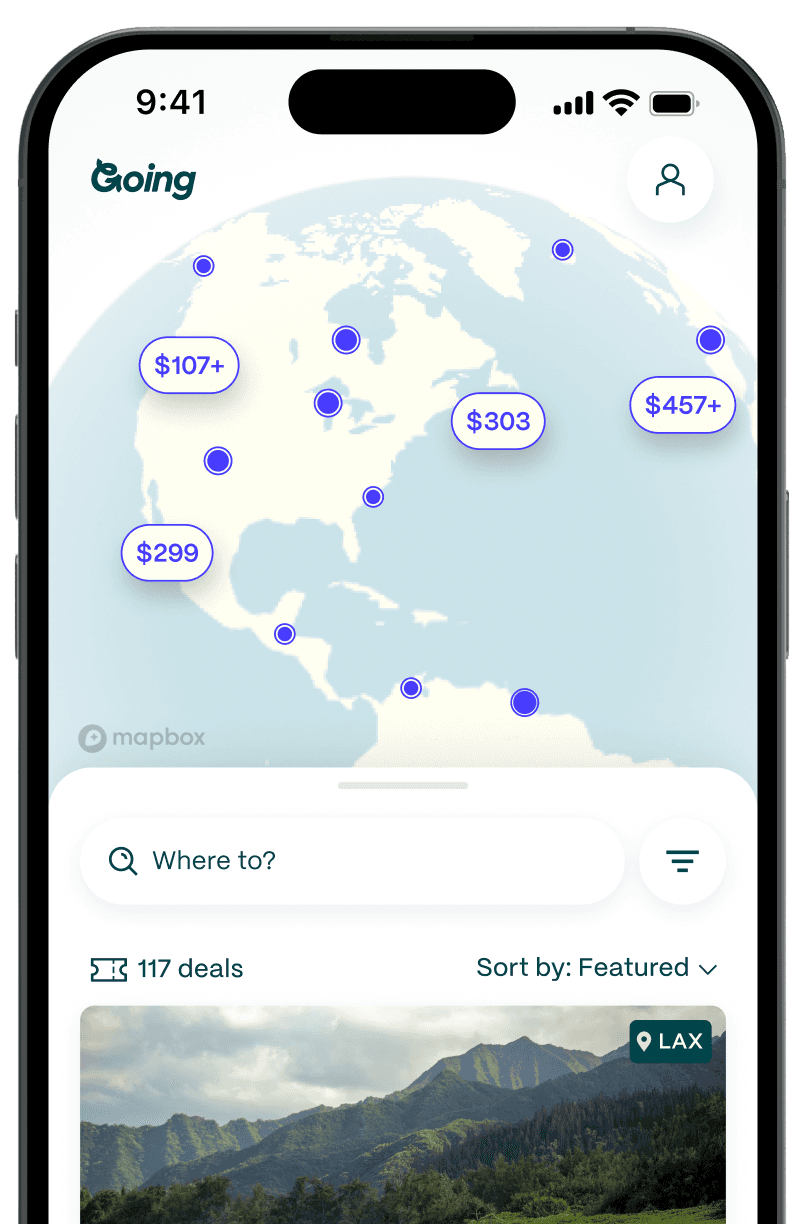
New Orleans: The Southern US City Where Jazz Was Born
If there were a contest for most unique American city, New Orleans would be a shoo-in, considering its European history, distinct cuisine, and notorious “laissez les bon temps roulez” spirit.
It might also be a contender for most recognizable, since even people who’ve never visited can likely summon an image of the French Quarter (or at least a gaggle of bead-wearing Bourbon Street partiers). Others might conjure up Mardi Gras floats, hulking steamboats on the Mississippi River, or live oak trees draped with Spanish moss. Perhaps they can’t forget the devastating images that followed the federal levee failure after Hurricane Katrina. But for anyone who’s spent time in New Orleans, it’s probably more than sights that linger.
It’s the taste of gumbo, the scent of jasmine, the unmistakable sound of a brass band coming down the street, and the general feeling of being somewhere really special. A place so special, in fact, it could also win most mythologized, since its lure seems inseparable from its lore (countless tales of voodoo queens, haunted cemeteries, even vampires). But New Orleans is much more than the tropes that attempt to define it. It’s one of the world’s most important cities, historically and culturally. And yes, it’s one of the most fun, too.
The French Quarter that’s actually kind of Spanish
New Orleans was once a thriving community and trading port that Indigenous peoples called Bulbancha, or “place of many tongues.”
In 1718, French colonists renamed it La Nouvelle-Orléans in honor of the Regent of France, who was also the Duke of Orléans. The city remained French for some 45 years. Then Spain took possession in 1763 and held on for 40 years. During that time, most of the original buildings in what’s now known as the French Quarter were destroyed in two fires and rebuilt under Spanish rule—yes, the buildings in the famous French Quarter are actually the designs of the Spanish.
In 1801, New Orleans was returned to France until the Louisiana Purchase in 1803, when it sold to the US for only $15 million. You’ll still find French vestiges galore, though, in the street signs, food, language, customs, and even law: Louisiana’s laws were primarily modeled on the Napoleonic Code written in France in 1803 and 1804.
On the Civil Rights Trail
From 1719 to 1808, thousands of enslaved Africans were captured and brought to Louisiana. When the transatlantic slave trade ended in 1808, New Orleans became the center of the
domestic slave trade. Now the city is finally acknowledging its shameful past (including removing confederate statues and changing street names) and recognizing the profound contributions of people of African descent, both enslaved and free.
Important Black heritage landmarks abound, including a number of stops on the U.S. Civil Rights Trail, such as the Tremé (the country’s oldest African-American neighborhood), the New Zion Baptist Church (whose president was a 28-year-old Martin Luther King Jr.), the 5th Circuit Court of Appeals (in which momentous school-integration decisions were made), and William Frantz Elementary School (where six-year-old Ruby Bridges attended school alone and helped desegregate the South). Just outside of the city is also the Whitney Plantation, an 18th-century plantation that is now one of America’s first museums—if not the first—wholly focused on the lives of enslaved people.
All that jazz, and more

New Orleans is widely known as the birthplace of jazz, but what many don’t know is that the city also shaped most other important American music.
In 1724, the Code Noir was set into law in New Orleans, giving the enslaved Sundays off to socialize, worship, hold markets, make music, and dance. In 1817, a new ordinance restricted these gatherings to one spot, Congo Square in the Tremé. There, cultures, races, traditions, and instruments intersected, and over time that music evolved into blues, gospel, jazz, R&B, rock ‘n’ roll, soul, funk, and hip-hop.
From Kid Ory and Buddy Bolden to Louis Armstrong, Jelly Roll Morton, Fats Domino, Mahalia Jackson, and Louis Prima all the way to contemporary headliners like Irma Thomas, Harry Connick Jr., Trombone Shorty, and Jon Batiste, the list of local legends is extensive. Today, the city’s soul is still its music, which you can hear all around the city, every night. On a three-block stretch of Frenchmen Street alone, some 15 music venues pump out amazing tunes every night—along with brass bands playing on the corner.
First you make a roux
Ok, the city’s soul is also its food. It’s no secret New Orleans cooks up the country’s most distinctive cuisine. Creole food—characterized by rich sauces, herbs, tomatoes, rice, spice, sausage, and seafood—is influenced by multiple cultures (Indigenous, French, West African, Spanish, German, Haitian, Italian, and Vietnamese, to name a few), but it’s a cuisine all its own, born in New Orleans and beloved by, well, everyone, right?
When you imagine eating your way through the city’s menus, it’s probably the staples you envision: gumbo, jambalaya, red beans and rice, shrimp creole, etouffee, (and maybe po-boys, oysters, crawfish, beignets ...).
The list of favorites is long, but the dish most deeply synonymous with New Orleans must be gumbo (it’s the official state food, too), and it’s also the most clichéd (and accurate) description of the city’s myriad cultural influences. Though not necessary from New Orleans, gumbo has been associated with the city since at least the mid-19th century.
The dish’s history is hotly contested, but the name gumbo is widely believed to originate from the West African word for okra, “ki ngombo.” Okra is traditionally used as a thickener and was introduced by enslaved Africans. Filé powder, or ground sassafras—also used to thicken and flavor—would have been introduced by the Indigenous Choctaw peoples. And the most commonly used thickener today, a roux—flour and butter stirred slowly until brown—is a variation introduced much later, by the French in Louisiana.
A side note: New Orleans has its share of incredible Cajun food, too, which overlaps with Creole but differs in certain regards (for example: no tomatoes). But for the best of the best Cajun, we’d send you to the source, Cajun Country, in southern Louisiana. (Start at Prejean’s in Lafayette, where the duck, pheasant, and andouille gumbo is a true masterpiece–or try it at Jazz Fest).
It’s always happy hour

New Orleans was the first city in America to have an official cocktail ratified by a state legislature. Nope, not a Hurricane or Hand Grenade, but a sazerac, declared in 2008. And though it’s been debunked that The Big Easy actually invented the cocktail, plenty of drinks were invented there.
In addition to the sazerac, there’s the absinthe frappé (a favorite of Mark Twain and Oscar Wilde), the Ramos gin fizz (try the one made with a farm egg at the new Chandelier Bar), and the Vieux Carré, among others. Chockablock with upscale bars and hole-in-the-wall joints, NOLA is, simply put, a drinking town. (The city even hosts the world’s preeminent drinking festival, Tales of the Cocktail.)
Liquor is available 24 hours a day; bars can stay open all night. New Orleans is also the only city in the US where you and your adult bevies are welcome pretty much everywhere; even in Las Vegas, you can drink only on the Strip and part of downtown. (Ok, technically, drinking booze outside is allowed only in the French Quarter—but it’s a law no one heeds.) So go ahead and request a plastic go-cup from a bar or restaurant and walk the town with it, and picnic freely in parks with your wine and beer.
Only a few caveats: alcohol shouldn’t be in glass and no open containers are allowed in moving vehicles (with the exception of Mardi Gras floats) or on public transportation. What about all the drive-through daiquiri stands? Well, frozen drinks are exempted. So long as the tape covering the straw hole stays intact and you aren’t drinking while driving, it’s all good.
Why are the laws so liquor-lenient? It started with a decision made in the late 1960s to allow “window hawking” on Bourbon Street, and a decision a few years later to ban it, and a lawsuit ruling in 1981 that allowed it again. But mostly it’s because … it’s New Orleans, baby.
Join the parade
There’s a lot to love about New Orleans, but it’s the celebratory culture that calls visitors back again and again. Where else can you stumble upon a parade on any given Sunday and be expected to join in? And join you should, following the brass band and main parade-goers and organizers.
Second Line parades are usually organized by Social Aid and Pleasure Clubs (local groups that grew from the 1800s benevolent societies), whose members, dressed in bright matching suits, dance, high step, buck jump, strut, and twirl parasols. The spectators who walk behind them (and the brass band) are called the second line, and everyone is welcome. So jump in the line and dance your way into one of the city’s greatest traditions.
Voodoo beyond the misconceptions
In film and literature, Voodoo is routinely depicted as sticking pins in dolls and cursing exes. In New Orleans, it’s a major tourist attraction (especially when it comes to Voodoo queen Marie Laveau, arguably NOLA’s most mythologized character). But Voodoo is a serious religion brought to Louisiana by enslaved Africans (who were forced to convert to Catholicism) and by more than 10,000 Haitians who moved to New Orleans in 1809 after their country’s slave revolt ended, suddenly doubling the city’s population.
Voodoo (or Vodou, the Haitian spelling) melded with Catholicism and other religions, resulting in what’s often called New Orleans Voodoo. Today, an estimated 15% of New Orleanians practice Voodoo. You’ll find lots of shops and museums in the French Quarter, but if you’re looking for authenticity, visit the Voodoo Spiritual Temple, where Priestess Miriam, who has been practicing for over 30 years, educates about Voodoo and offers spiritual guidance, or the Island of Salvation Botanica (next to the International Shrine of Marie Laveau). Owned by respected Vodou Priestess Sallie Ann Glassman, the shop carries an array of religious supplies and medicinal herbs at reasonable prices. Readings and healing ceremonies are also offered.
Throw me something, mister!

Who doesn’t love a festival? How about 100-plus festivals? New Orleans hosts them for everything from po-boys and oysters to cocktails and tomatoes to Louis Armstrong and Tennessee Williams. The list goes on and on. There are many music festivals (including Jazz Fest, of course), and then…there’s Carnival, which has an entire season dedicated to it.
The fun begins on January 6th (Epiphany) and rolls through nearly two months to the Tuesday before Ash Wednesday, aka Mardi Gras, aka Fat Tuesday. There are parades all season, and on the final day, some 1.4 million people from toddlers to seniors, costume up to party down—or at least to catch shiny things thrown from enormous, dazzling floats. Despite its reputation for drunken debauchery, Mardi Gras is entirely family-friendly in every part of the city aside from the French Quarter (where floats aren’t even allowed). It’s weird and wild and wacky and just about the most fun a human being can have.
Geaux team!
Everyone loves the Saints, after their post-Katrina Super Bowl win that saved the spirits of all New Orleanians, and there’s nothing better than joining a “Who Dat” chant in the Superdome.
But NOLA offers even more to sports fans. The Pelicans put on a great basketball game (complete with two beloved, if creepy, mascots, Pierre the Pelican and King Cake Baby). And there’s a major league rugby team, too. One of the highlights of seeing the NOLA Gold play is arriving early to second line onto the field and high-five your favorite players.
And lastly, the Big Easy Rollergirls are a glorious spectacle of aggro skating. Visit on Bastille Day (remember, NOLA was originally French), when the city holds a three-day running-of-the-bulls-style festival called San Fermin in Nueva Orleans (remember, NOLA was also Spanish), except the bulls are the Rollergirls (and other roller derby ladies from around the world), wearing horns and chasing people through the streets with wiffle bats.
In the write place

Countless books, plays, and films have been penned about New Orleans, and quite a few have been written in New Orleans, too, including Tennessee Williams’ play A Streetcar Named Desire and John Kennedy Toole’s Pulitzer-winning A Confederacy of Dunces.
Bibliophiles can shop for books in William Faulkner’s former home, now a beautifully stocked bookstore in the French Quarter’s Pirates’ Alley. And they can sleep (and drink and write) where numerous lauded authors, including Williams, Faulkner, Ernest Hemingway, and Eudora Welty slept, drank, and wrote—in the Hotel Monteleone, one of only three literary landmark hotels in the country. (Truman Capote even claimed to have been born there, though he wasn’t.)
Walt Whitman also lived in New Orleans for three months working as a newspaper editor, and Mark Twain and Charles Bukowski found inspiration on many visits. And of course, Anne Rice resided in New Orleans and based many books there, including her vampire series.
Join Going for cheap flights to New Orleans and destinations near and far.
Last updated December 19, 2023









